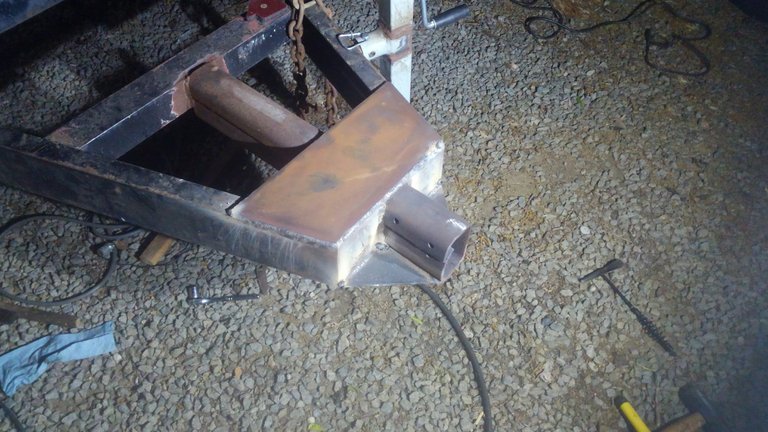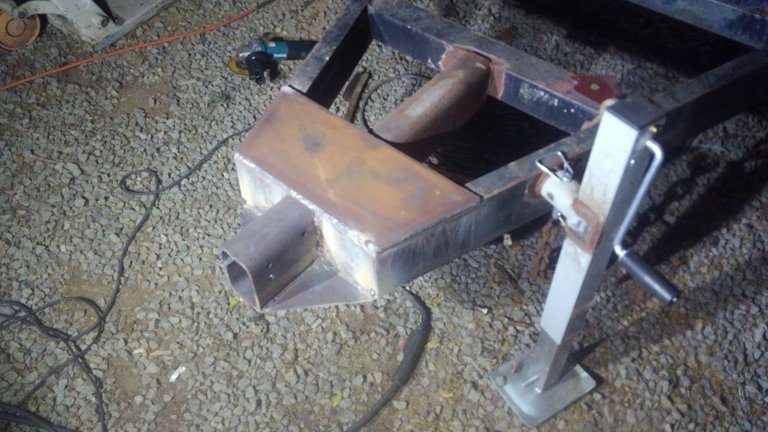Here's some photos of work on my latest project. I was up late last night working on this and liked the results enough to snap a couple photos with my phone. I'm refurbishing an old trailer that will be used to haul future projects. I've got the truck straightened out, now I need the trailer. This is a tandem axle with a 20 foot deck on it. It didn't have any brakes on it when I bought it, which is unacceptable for me, so I needed to come up with something. The axles themselves are homemade fabricated deals from either an old Chevy or GMC half ton front knuckle/spindle/hub assemblies.


Since the trucks these came off of had factory front disc brakes, and two of the spindles still have the calipers attached, I'm going to actually hook up the hydraulics to them and use them to make a surge-brake setup. Surge brakes work by inertia. As you apply the brakes on the truck, the inertia of the trailer trying to push into the truck will mechanically actuate a master cylinder at the tongue of the trailer, applying the brakes only when the truck is slowing down, and the force of the braking on the trailer is proportional to the rate that the truck itself is slowing. The thing I like about these is that they are very simple and there is no need to have an electric brake controller in the towing truck. My truck has this, but you can't exactly purchase electric brakes to fit to a Chevy half ton anyway, so hydraulic surge brakes it is!
The tongue of this trailer was originally triangular, but the surge brake actuator needs a 4 inch wide longitudinal piece of tubing to attach to. I lopped the front of the triangular tongue off and fabricated up this solution. The tubing is quarter inch wall 4x6 steel tubing that I found in the remnants pile at the local steel yard. It's way overkill for what I'm using it for but it was scrap price and it never hurts to make a piece of equipment too strong. The rest is from a remnant piece of 3/16" steel plate I got from the same place. I added a trapezoidal gusset aft of the resulting stub on the top, then I added two triangular gussets fore of the stub on the bottom. These will help transfer all of the stresses and strains further back into the chassis without risk of cracking the structural welds holding the tubing and tongue channel pieces together.
I think it turned out pretty good. You can also see in the pics that I attached a swing-away jack to lift the trailer at the nose. This style of jack is superior to the style that are fixed in the center due to the fact that they increase ground clearance, need to be turned fewer turns to clear the ground, and allow the tailgate of a pickup truck to be down while backing the trailer, increasing visibility. They aren't quite as sturdy as the center-mount kind, but still plenty strong for what I'm going to use this trailer for.
If I get any interest on this post, I'll keep taking photos of my progress as I fab up the brake lines and put a new deck on the trailer. Let me know in the comments below if you'd like to see more, or if you have any other suggestions feel free to say so.